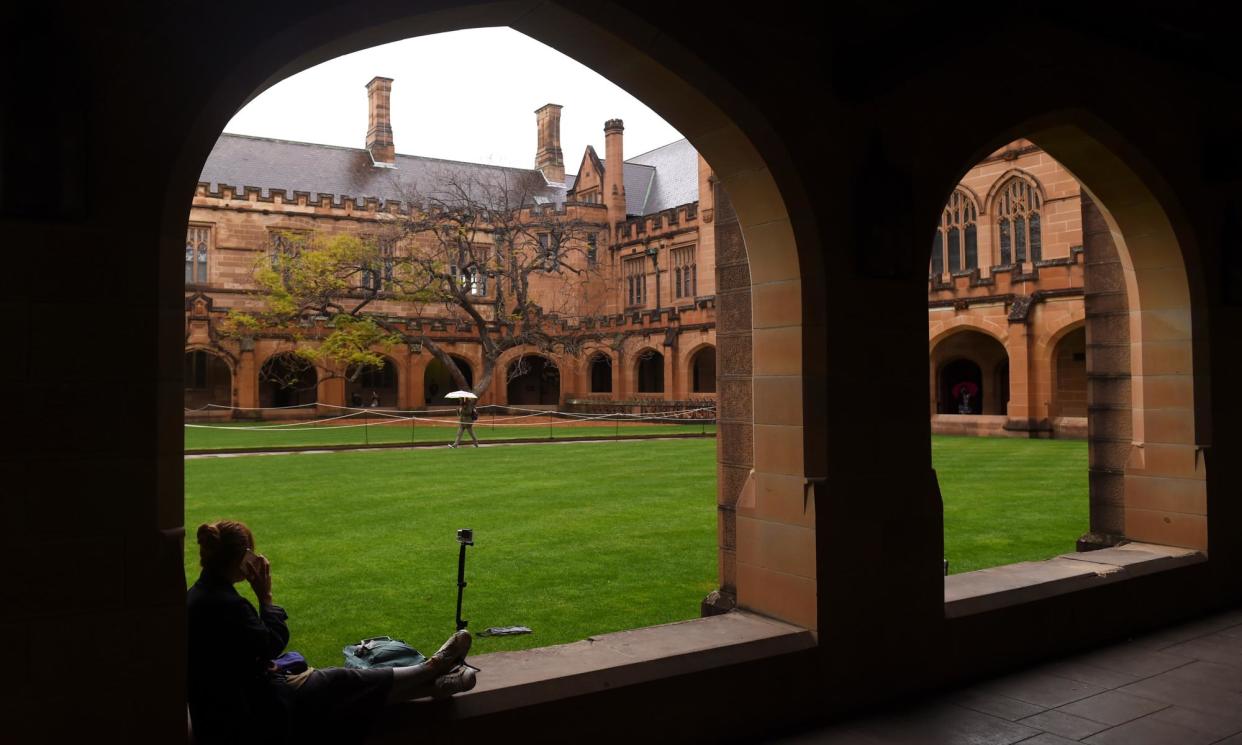New South Wales universities receive 40% of student fees from just three overseas countries

New South Wales universities receive 40% of their total student fees from just three overseas countries, the latest auditor general’s report has found, posing a “concentration risk” for the sector amid an anticipated cap on international students.
The report, released on Wednesday, showed the revenue stream from international students returned to pre-pandemic levels in 2023, with a 12% increase in overseas enrolments on the previous year to 166,178.
Overseas students contributed $3.4bn to course fees in 2023, a $325.5m increase on 2022, with students from China, India and Nepal comprising $2.5bn alone.
Total fees generated from those three nations is close to the $2.7bn received from Australia’s domestic students, and comprises 71.7% of revenue from all overseas students.
Universities earn nearly twice as much from overseas students compared with domestic students. Average revenue per domestic full-time equivalent student was $22,996 in 2023, the report found, compared with $41,117 for an overseas equivalent student.
Universities are facing a cap on international students, with a bill introduced to parliament by the education minister that would give him wide-ranging powers to set a maximum number of new international student enrolments for courses and providers.
“NSW universities’ overseas student enrolments and revenue in 2024 are sensitive to changes in the rate of approvals of student visas,” the report warned.
“Unexpected shifts in demand arising from changes in the geo-political or geo-economic landscape, or changes to visa approval rates or travel restrictions, can impact revenues, operating results and cash flows.
“The consequence of the risk of reliance on revenues from overseas students, when there is a lack of diversification in the countries of origin, was realised as travel restrictions were implemented following the outbreak of Covid-19 in early 2020.”
Nationally, the number of international students in Australia shot up from about 580,000 pre-pandemic to 700,000 in February, prompting fears over low housing supply.
In NSW, all universities, except for Charles Sturt, had an increase in overseas student revenue in 2023, the report found, by as much as 47.1% on the previous year.
The report attributed the increase to student recruitment strategies, relaxed post-study visa rules and student working rights, leading to a higher number of applications that “reportedly used fraudulent documentation or information in their applications since the re-opening of the international border”.
Overall, seven of the state’s 10 universities recorded China as their leading source of overseas student revenues, creating a “concentration risk for each university, and for the NSW university sector as a whole”.
As the overseas market grew, the number of full-time equivalent domestic students dropped, by 2.6% in the year to 2023 – with only three universities experiencing an increase.
Eight universities reported net deficits, with just the University of Sydney and the University of Newcastle avoiding the red, in large part due to success attracting the international market.
At the University of Sydney and UNSW, overseas student revenue made up 64% of the state’s total revenue from international students.
The deputy Greens leader and spokesperson for higher education, Senator Mehreen Faruqi, said international students had been doing the “heavy lifting” on university funding when it should be the government’s role.
“International students should be welcomed and not treated as cash cows or scapegoats for the government’s failures,” she said.
The report also cited a number of risks facing the sector, including outdated policies and payroll procedures.
The Australian Universities Accord, released earlier this year, recommended an overhaul to university governance to improve industrial relations compliance, workforce management and student safety.
Seven universities had cybersecurity risks “above what was acceptable”, while the report also cited delays in responding to auditor recommendations, remediating wage underpayments and not capturing staff conflicts of interest.
There were $183m in wage underpayments owed to staff at the end of 2023, the report found, a 66% increase on 2022, while just $9.7m was back-paid during the year. Seven universities were not implementing procedures to reduce the future risk of staff underpayments.
The national president of the National Tertiary Education Union, Dr Alison Barnes, said wage theft was the “toxic twin” of insecure work in Australian universities.
“While the scale of theft in NSW is shocking, it is not surprising,” she said. “Unfortunately this reflects the warped priorities of university executives who refuse to properly value their most important asset, the people.
“Executives are addicted to secrecy and dodging accountability and it’s high time they came clean on dodgy practices which are holding our universities back.”
Faruqi said the audit confirmed “what we already knew”.
“Wage theft in universities is systemic, endemic and absolutely shocking in scale,” she said.

 Yahoo News
Yahoo News 
